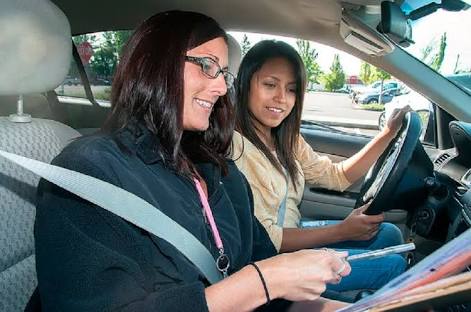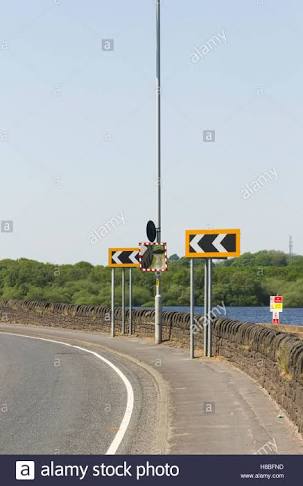Defensive Driving Tips to Keep You Safe On our Motorwat.
.jpg)
Getting behind the wheel of your car may seem like a commonplace event, but it is likely to be the most dangerous thing you will do all day long. Accidents are the fifth leading cause of death. Your odds may be even higher depending on where you live and what you drive.
Although you can't control the actions of other motorists, you have a great deal of control over how you operate your vehicle. That means you can increase your chances for a safe trip by following a few simple precautions. Here are some helpful tips to keep you driving happy and safe.
- Focus on the task while driving avoid distractions.
Don't let phones, radio, air conditioning, kids in the backseat, or a heated discussion with your spouse distract you from your job as the driver. Always pay attention to the road and your vehicle. The NHTSA states that drivers under 20 are the most prone to distractions while driving, with 11 percent involved in fatal crashes while distracted. The lives of the passengers lies in the hands of the driver. For example a doctor going to the office who just left his wife and kids who drive off to school received a call while driving on his way to the office answered without precautions might get a shock that may lead to death or fatal injuries depending on the news he got. Like your wife and kids just got involved in a car accident and all of hem are dead

- Other drivers are bound to make mistakes.
Don't trust anyone but yourself. Drivers intentions are not known but can be predicted. A driver who wants to do a diversion but has not given any signal can cause crashes so always be at an alert to lredict your fellow drivers intentions.
.jpg)
.jpg)
- Slow down.
Many drivers don't really know how or when to slow down. Just a few spot you must slow down are a double Bend, a sharp bend, at every junctions and road intersesseions.
The 2009 U.S. Census reported 33,808 fatalities due to speeding. The faster you travel, the longer it takes to stop, and the bigger the impact when you crash.the slower you drive the less impact you have when you crash. But do travel along with the flow of traffic, as long as it does not exceed recommended limits.
.jpg)
- Take advantage of safety tools
Find a car with a high safety rating and large number of air bags. Invest in the right child restraints and seat belt adjusters for your family, and don't forget to use them. According to the CDC, "Placing children in age- and size-appropriate car seats and booster seats reduces serious and fatal injuries by more than half."
.jpg)
- Always, always, always buckle up.
Many car accident fatalities could be prevented each year, by simply wearing a seat belt. The National Safety Council says that seat belts reduce your risk of injury in a crash by 50 percent, and that 75,000 lives were saved by seat belts between 2004 and 2008. Those least likely to buckle up are teens, rural drivers, intoxicated drivers, and commercial truck drivers. When there is a crash and the passenger is not on seat belt there is a tendency that he could fly off the wind screen.
.jpg)
When in doubt, yield:.this means that when you are not sure of who is right just avoid aguememts and give way for the other driver.
If you aren't certain who has the right of way, err on the side of caution. If you know you have the right of way, but another motorist seems to disagree, give in. Better to lose a bit of time than to get caught in a collision. According the Insurance Institute for Highway Safety, men have a harder time yielding the right of way, with a ratio of 1.5 to 1 for 'failure to yield' violations.Stop on red.
The leading cause of intersection collisions is running the red light. Sometimes it's a lack of attention to the road. Sometimes it's glare from the setting sun. Sometimes it's just plain hurry. The best practice is to slow down before each intersection, and evaluate the situation. Never race the yellow light.
.jpg)
- Use your blinkers.
Confusion is the enemy of safe driving. Make your lane changes and turns predictable and smooth, and always signal in advance. "Nationwide, neglected or improper turn signals cause 2 million car accidents a year," says Richard Ponziani, who conducted a recent study for the Society of Automotive Engineers. Failure to signal can invalidate your insurance claim after an accident, which means you will be financially responsible for any damage caused.
- Let it go.
Road rage is not just an urban myth. Since you don't know who might be behind the wheel of that vehicle that just cut you off, it's safest to back away and overlook the offense. Road rage has led to murder over trivial offenses in all 50 states. Getting even could get you killed, not to mention the innocent drivers in your vicinity. If you suspect that another driver may be drunk, stay away, and alert the authorities as soon as it is safe to do so.
- Keep a buffer between yourself and other motorists.
Tailgating leads to rear-end collisions, and you will be the one to foot the bill for the repairs. The NHTSA estimates that 1/3 of all traffic accidents are caused by tailgating, and could be prevented with proper distance. Allow at least two seconds of lead time in good weather, more in bad weather.
- Monitor your blind spots, and stay out of others' blind spots.
This is especially true of large vehicles, such as tractor-trailers. The rule of thumb is that if you can't see the driver in the truck mirror, he can't see you either. Accidents involving semi- trucks often prove fatal for the driver of a car.
- Don't drive drunk, buzzed, high, or low.
Even an over-the-counter cold medication can alter your response times, so assess yourself honestly before deciding to drive. The average drinker can only metabolize one drink per hour. One drink equates to 12 ounces of beer, or 5 ounces of wine, or 1.5 ounces of distilled spirits. If you are under the influence of any mind-altering substance, stay away from the wheel. NHTSA estimates 28 people die daily in the U.S. from drunk driving accidents.
- Adjust for rain.
When the roads are slick and wet, especially in a heavy downpour or the first thirty minutes of a storm, your braking times increase. Turn off cruise control. Add extra space between your vehicle and other vehicles. Slow down as much as is feasible. Learn to detect and react properly to hydroplaning.
- Prepare for snowy weather.
Slow down, and use snow chains if you see snow accumulating on the highway, but do not use chains on ice. If you live in an area where snow and ice are common, invest in winter snow tires. Always turn off your cruise control if you suspect ice may be present.
- Inflate your tires appropriately, and change them when they are worn.
Properly inflated tires make for safer handling, and blowouts can cause an instant loss of control.
- Use headlights wisely.
Anytime visibility is impaired on winding roads, during fog, rain, snow, or low light, make sure you can be seen by turning on your headlights. Only use your high beams in low-traffic areas, and turn them down for oncoming drivers. This particular act has caused many road crashes because when two head lights are on in opposite directions they would not see clearly.
- Maintain your vehicle.
Regular oil changes and fluid checks can save you from surprise breakdowns on the road. If your car becomes disabled on a busy highway or interstate, the National Safety Council recommends that you try to pull over in the breakdown lane, if possible. Remember to use your turn signals, and watch for fast-moving cars. If you have parked a comfortable distance from traffic, lock the doors and wait for help. If you are close to traffic, exit the vehicle, and find a safe place to stand, away from the side and rear of the car. If you cannot reach the breakdown lane, and your car is stopped in traffic, leave the vehicle as soon as it is safe to do so, and wait for help in a secure location on the side of the road.
- Respond safely to tailgaters.
If someone is following too closely, add twice as much space between your car and the car in front of yours. This increases your ability to see and prepare for a collision. Then carefully and gradually decrease your speed to slightly below the speed of surrounding traffic, and try to move into a right hand lane, to let the tailgater pass. Do not hit the brakes suddenly, unless you are forced to do so to avoid a collision.
- Keep a steady pace.
Sudden increases and decreases in speed, unexpected lane changes, and unpredictable stops make it hard for other drivers to anticipate your actions. Be predictable and avoid surprising anyone around you.
- Look far ahead of your vehicle.
Keep your eyes far down the road, and anticipate problems before you come to them. Look for erratic drivers, slow traffic, intersections, and highway debris.
Many defensive driving classes are available online and in your area. This can make a great gift for a young family member, or you can use it as a preventive exercise for yourself. I will be your instructor on safe driving on our motorways. On this steemit community not just driving but safety precautions in general both in our homes and place of work.
You can get more information on
This is how far we can go for today if you have any questions comment and you are sure of getting a response from me.
Watch online here
►►►►►►►►►►►►►►►►►►►►►
Click here:
►► http://moviezland.com ◄◄
►► http://moviezland.com ◄◄
►► http://moviezland.com ◄◄
-=-=-=-=-=-=-=-=-=-=-=-=-=-=-=-=-=-=-=-=-=
Watch online here
►►►►►►►►►►►►►►►►►►►►►
Click here:
►► http://moviezland.com ◄◄
►► http://moviezland.com ◄◄
►► http://moviezland.com ◄◄
-=-=-=-=-=-=-=-=-=-=-=-=-=-=-=-=-=-=-=-=-=
76478